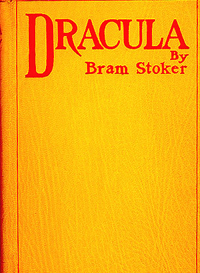From Slavic folklore to Sookie Stackhouse, new course will study vampire depiction in the East and West
LAWRENCE – A University of Kansas professor hopes the allure of vampires will tempt students to learn more about the region of the world from which Dracula hails.
This spring, the Department of Slavic Languages & Literatures is offering the course “The Vampire in Literature, Film, and Television.” Pulling from 19th century Russian literature to “Twilight,” the class will explore the origins of the vampire, depictions of the creature over the centuries and audiences' continued fascination with the mythical figure.
 “We hope this will draw students to our department. And so far we have received a lot of interest,” said Ani Kokobobo, assistant professor of Slavic languages and literatures, who will teach the class. “We are envisioning this as a gateway course with broad appeal.”
“We hope this will draw students to our department. And so far we have received a lot of interest,” said Ani Kokobobo, assistant professor of Slavic languages and literatures, who will teach the class. “We are envisioning this as a gateway course with broad appeal.”
A fan of the vampire genre, Kokobobo specializes in late 19th century Russian literature and Balkan modernism. She is working on the book “Russian Grotesque Realism: The Great Reforms and Gentry Decline.”
For generations, vampire folklore has been part of Slavic superstition, Kokobobo said. The first known reference to the word "vampire" appears in the 11 century in the Russian Primary Chronicle. In the Slavic tradition, the vampire wasn’t imagined as a blood-drinking creature living in darkness as it is today but was a more amorphous figure.
 “This belief is really bound to the unclean dead, people who died from unnatural causes. In that part of the world, people really believed that the dead would wake up and very often approach their relatives,” Kokobobo said. “There were different kinds of dead people, and they did different things.”
“This belief is really bound to the unclean dead, people who died from unnatural causes. In that part of the world, people really believed that the dead would wake up and very often approach their relatives,” Kokobobo said. “There were different kinds of dead people, and they did different things.”
In 1897, Bram Stoker’s Gothic novel “Dracula” shaped the modern view of the vampire, and did so by merging two Slavic historical figures. The better known is Vlad III Dracula, a Transylvania prince who fought against the Ottoman Empire. He earned the name Vlad the Impaler for his practice of impaling enemies on spikes. Dracula, meaning "son of dracul," came from Latin word for dragon. Vlad’s father, Vlad II Dracul, was inducted into the Order of the Dragon, a fellowship of knights tasked with defending Christian Europe from the encroaching Ottomans.
“Vlad didn’t really have much to do with vampires. But I suspect that Bram Stoker really loved his surname,” Kokobobo said.
Stoker also took details from the life of Elizabeth Báthory, a Hungarian countess in the late 16th and early 17th centuries who tortured and murdered young girls.
“She is more vampiric,” Kokobobo said. “Legend goes that she killed as many as 650 girls. She fetishized blood and believed that if she bathed in the blood of a young girl her skin would remain young and supple.”
Along with examining Slavic folklore and the legends of Vlad and Báthory, Kokobobo will have her class study examples of the gothic vampire in Western and Eastern Europe, vampires in film and contemporary vampire works.
The syllabus includes pop culture favorites, films such as “Interview with the Vampire” and “Twilight"; television series such as “The Vampire Diaries,” and “True Blood," and the Sookie Stackhouse novels that inspired “True Blood.” Kokobobo will compare these works to popular vampire books, films and music in Russia. One example is “Night Watch,” a Russian novel and then movie about vampire-like creatures in a dystopian world.
“There has been a migration of the idea of the vampire. It goes from East to West and then from West to East in the 20th and 21st centuries,” Kokobobo said.
Kokobobo will also look at why many cultures continue to be mesmerized by this bloodsucking being. Compared to other supernatural creatures, Kokobobo said, the vampire is closest in form to humans and becomes a reflection of society’s anxieties at large.
“Scholars have suggested that vampires take on our fears at any given time. A fear of AIDS, outsiders, sexuality and aggression,” Kokobobo said. “As we change, the vampire changes and remains relevant.”